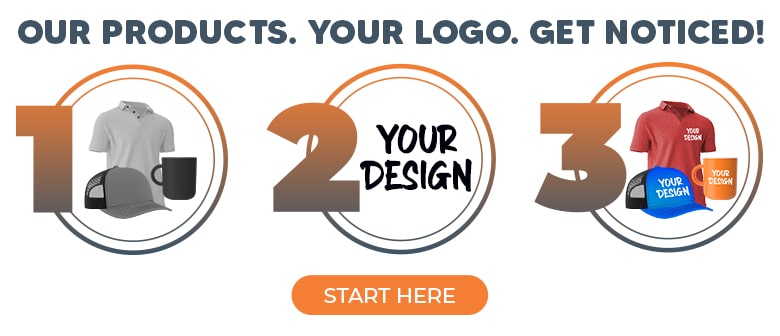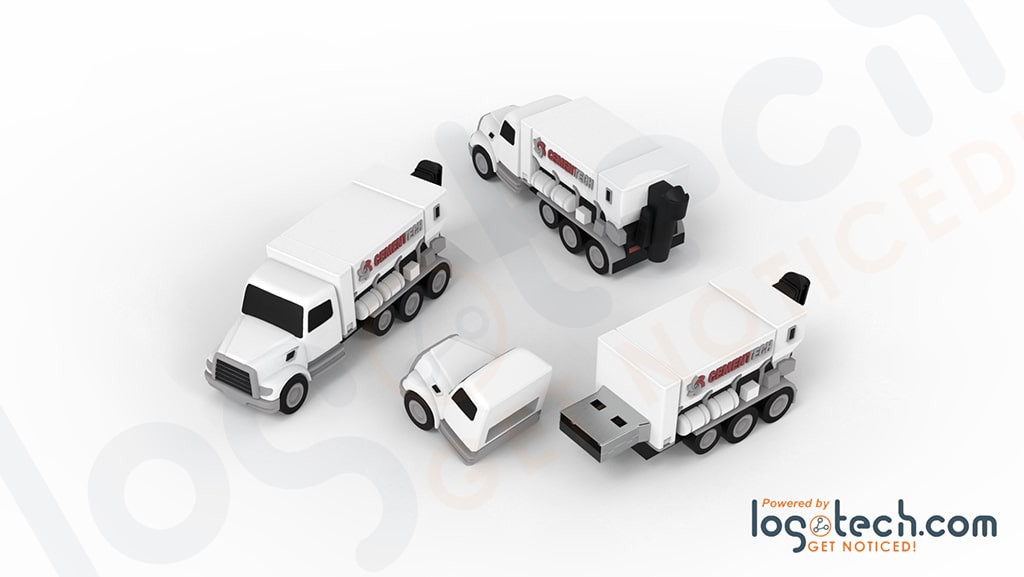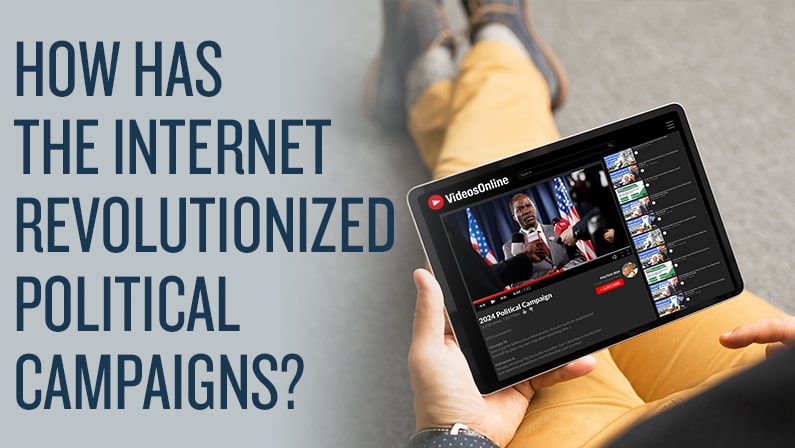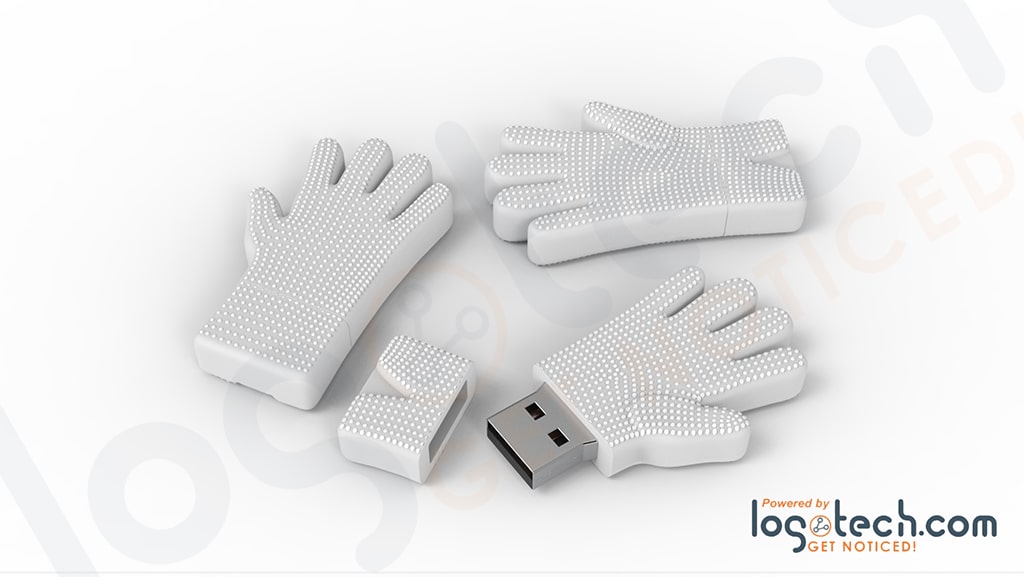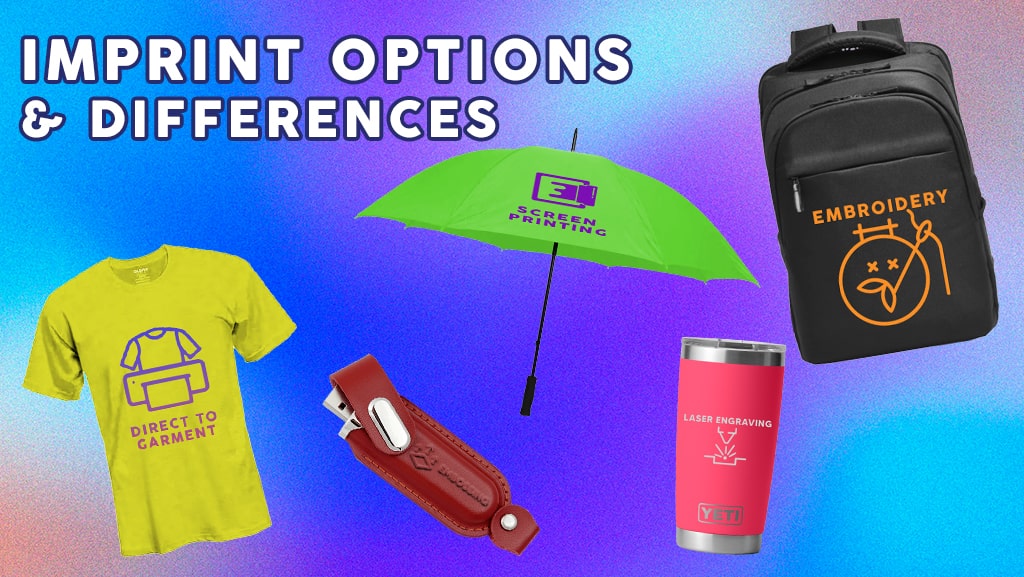
The Different Types of Printing Processes & What's Right For You
Find out what printing method is right for you with Logotech.
One of the great things about marketing with promotional products is the wide range of products you can select. Different printing methods are used based on several factors when logo printing on products. The product you want, the material it's made from, and the logo you want to print are all relevant when choosing a method.
Knowing the details of each printing method is smart, but you don't have to worry about being an expert! Our account managers at Logotech have loads of experience with each of our printing methods and can answer any questions you have.
Still, understanding different decoration methods and how they work can make your promotional product experience easier. So let's investigate the most common printing methods for promotional products!
Screen Printing
A common method for printing promotional products is screen printing. Screen printing is one of the oldest types of printing– it dates back to 10th century China! The screen printing technique involves a few steps. First, a stencil screen is developed using your design. The screen is centered on the product, and a squeegee passes ink through the screen to create your design. Additional screens are required for each color in your design.
Screen printing is excellent for large quantities of products. That is because the process moves quickly once the screens have been produced. However, the setup involved with screens means it's not the best option for smaller orders. Also, screen printing is not suitable for producing photo-realistic designs. It is best for printing logos, messaging, and simpler designs. Screen printing is used for various products, most commonly with apparel, tote bags, office supplies, and drinkware.
Heat transfer
Another standard printing method for products is heat transfer. Heat transfer is primarily used with apparel and other cloth-based products. The process involves a few steps. First, your design is printed on special release paper. The paper is centered in the desired location. Then, intense heat and pressure are applied to the paper using a heat press. The heat and pressure bond the design to the fabric, leaving your design on top.
Heat transfer printing is excellent for multicolored designs. That's because the entire design is printed and pressed at once. However, heat transfer is not ideal for larger orders since a new release paper needs to be printed for each pressing. Heat transfer printing is often used on fabric-based items like apparel, backpacks, or tote bags.
Embroidery
Embroidery printing involves using a needle and colored thread to stitch your logo into the fabric. It is one of the oldest fabric decoration methods; embroidered fabrics have been discovered in several ancient cultures. Embroidery is still a widespread method for decorating fabrics today!
Originally done by hand, embroidery machines now allow for a much faster and more accurate process. First, your logo is uploaded to the machine. The machine scans your logo and then applies the individual threads.
With embroidery, you get high-quality and durable designs with great production speed. However, it is not a great option for creating detailed designs or small lettering, and it can only be used on fabric. Embroidery printing is best for putting simple logos and designs on promotional clothing, accessories, blankets, and towels.
Sublimation
Sublimation printing is a newer method for printing promotional products. How does sublimation printing work? The process is similar to the heat transfer process.
First, your design is printed on transfer paper with special ink. This paper is generally larger than the item to be printed to give full-color coverage to your product. The fabric and paper are then put in a heat press, which applies heat and pressure.
What's unique about sublimation printing is that the ink turns from a solid directly into a gas (this is the definition of sublimation). The gaseous ink is applied to the fabric, and the ink and fabric bond permanently. This process results in a soft finish and striking color.
Sublimation is excellent because it allows for detailed designs that completely cover the fabric. Any textile-based promotional product can be printed using sublimation. That includes apparel, bags, can coolers, lanyards, and more.
Digital Printing
Digital printing, also called direct printing, takes the middleman out of printing your products. With digital printing, your logo is printed directly onto products with a digital printer. The lack of screens or transfer paper makes digital printing simple and cost-effective.
Generally, digital printing is used for paper products like business cards and mailers. However, new types of digital printing have increased the number of products that can be printed directly. Digital UV printing is a popular type of digital printing. It uses UV light to dry ink immediately after printing. That means the design dries immediately without risk of smudging, allowing for printing on nearly any material.
Digital printing is great for printing logos on office supplies, stationery, signs, and banners. However, since digital printers use cyan, yellow, and magenta inks to create colors, exact Pantone color matching is not an option. Instead, the printer simulates as close as possible to Pantone colors using traditional CYMK printing.
Pad Printing
One of the most versatile methods for printing products is pad printing, also called offset printing or tampography printing. Pad printing utilizes a silicone or rubber pad to place logos on promotional items.
So, what is pad printing? How does pad printing work? The process is simple. Metal plates are engraved with your custom design, then filled with ink. The machine then places the rubber pad onto the plate, picking up the image. Then, the pad is pressed onto the product, printing your logo or design. Similar to screen printing, multiple presses are required for each color in a design.
Pad printing is widely used in the promotional product industry for several reasons. The flexibility of the rubber makes pad printing great for items that are small or oddly shaped. Also, the use of machines makes the process ideal for large quantities of products. PMS inks are used so that you can match exact colors.
You can have many products pad printed, like electronics, tools, and drinkware. However, for printing on fabric, methods like screen printing or sublimation are more suitable.
Laser Engraving
Did you know the word laser is an acronym? Lasers can be used to engrave logos on products. So, how does laser engraving work?
Laser engraving uses a laser beam to remove material, engrave your design or logo onto a product. Your design is uploaded to a computer that controls the engraving machine. It then fires the laser onto your items, allowing small details to be created precisely.
Laser engraving does not have a color, since it only removes material from your product. However, one can combine the process with other printing methods to produce colored engravings. Most all materials can be laser engraved. It's commonly used on products like drinkware, electronics, and tools.
Debossing and Embossing
Debossing and embossing are two more decoration methods for promotional products. Debossing and embossing have similar processes that lead to opposite results. Like pad printing, a metal plate is created using your design. Then, the plate is pressed directly into the material with heat and pressure to create your design. Embossing uses a depressed stamp to create a raised image, while debossing uses a raised stamp to create a depressed image.
Embossing and debossing have been used since at least the 15th century. The processes have been used to produce products like leather wallets and coins.
Like laser engraving, debossed and embossed printing don't create colored designs. However, you can combine them with other printing methods to create stunning results. Products that often utilize debossed or embossed printing include wallets, notebooks, and business cards.
What's the best printing method for your products?
As you can see, there is a lot of variation between different printing methods. The best method for your products will depend on the materials involved and your desired finished product.
For apparel or fabric-based products, screen printing, heat transfer, sublimation, embroidery, and digital printing are all great options. When you're looking to print on electronics or office supplies, pad printing is a great option, along with laser engraving or screen printing. Embossed and debossed printing is excellent for putting a unique finish on leather products and stationery, and you can combine multiple decoration methods to produce striking designs.
If all this information sounds like a lot, don't worry! Logotech's account managers are experts in decoration methods and are eager to help you create the perfect products. Create an account with Logotech, and an account manager will reach out to you today!
Frequently Asked Questions
Q: What is the most popular printing method for promotional items?
A: Pad printing, screen printing, and digital printing are three of the most popular methods for printing products. That is due to their cost-effectiveness and high-quality prints.
Q: What is the newest printing method for promotional products?
A: Digital printing and laser engraving are the most recent developments in printing promotional products.
Q: How can I get more information regarding printing methods?
A: Logotech's account managers are experts in printing promotional products and are happy to provide you with any information you need! Create an account with Logotech, and an account manager will reach out promptly. You can also call (888) 244-5152 or access the chat function on our website.




